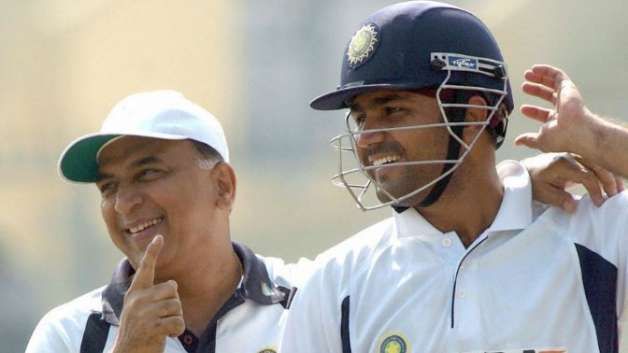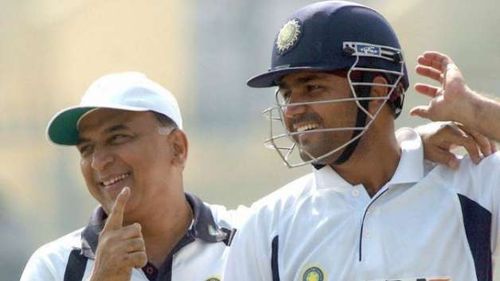
Does an All-time cricket XI do justice to players of different eras?

As per the ancient Indian epic Mahabharata, Arjun was supposed to be the best archer ever known to mankind. It is said that he could aim just by looking at the reflection of the target. While in the recently concluded Rio Olympics, Ku Bon-Chan from South Korea won the gold medal in the men’s category in archery.
So, what would have happened if Arjun was to face up Ku Bon-Chan today? Or if we were to put together an all-time archery team, how would have the duo of Arjuna & Karna (another ace archer from Mahabharata) fared against the Rio Olympics gold-winning South Korean team?
My questions might sound absurd to many of you. People will argue that the times are different and it may not be correct to compare people who had lived thousands of years ago with today’s generation. Well, I totally agree with you and feel that it is indeed illogical to compare Arjun with say, Ku Bon-Chan.
What purpose does an All-time XI serve?
But then why are cricketers from different eras compared? They are not only compared but the latest trend is to have an “All-time Cricket XI”. These days every Tom, Dick, and Harry comes up with their own version of an all-time XI. The Board of Control for Cricket in India (BCCI), in fact, came up with a contest and asked the fans to vote for their All-time XI Indian team.
To be fair to the BCCI and the millions of cricket fans all over the world, such things brings in a good deal of excitement. And every cricket fan at some point of time would have fantasised a team consisting of great players from different eras. But do such teams really do justice to the players of different eras?
The WYSIWYG effect
The first reason due to which I am not in favour of picking such an all-time XI is that a person of today’s generation may not have seen the players of previous eras. So, his selection is bound to be biased towards the stars of his generation. Commentator Harsha Bhogle who apparently is also not a great fan of this trend summed up this reason perfectly by calling it the “recency” factor. He went on to give examples of several recent poll results in which only Sunil Gavaskar and Kapil Dev were able to make it to the final XI.
I would call this as the WYSIWYG (what you see is what you get) effect in cricket. This means that my selection would be influenced by what I have seen. So if I am selecting my Indian all-time XI, a VVS Laxman will supersede someone like Gundappa Viswanath for a middle order spot. And the main reason behind my selection is that I had seen Laxman’s masterclass at Eden Gardens.
But isn’t that a tad unfair on Viswanath? The fact is that I was not born when he scored a match-winning unbeaten 97 runs on a difficult pitch at Madras (now Chennai) against the West Indies in 1975. As a result, I will never understand the importance of that masterpiece from Vishy (as he was fondly called).
Coming to the selection of an all-rounder and most of us would prefer Kapil Dev over Vinoo Mankad. I am certain that more than 50% of the people who would have ignored Vinoo Mankad would have no idea about the style of his bowling (For records’ sake, he was a slow left-arm orthodox bowler). With due regards to Kapil Dev; Mankad would have missed out on the team bus just because of our ignorance.
Similarly, if I have to select the 12th man for my all-time team; I might opt for a Yuvraj Singh over Eknath Solkar. Again my rationale would be Yuvraj Singh’s athleticism and fielding skills. But having never seen Solkar field at short-leg without helmets to the likes of BS Chandrashekhar; I will never be able to comprehend the degree of his greatness.
There are many players from yesteryears like Pankaj Roy and MAK Pataudi among others who were greats in their own way but may never figure in any of the all-time Indian XIs picked by people of my generation.
How will the greats from different eras perform together as a team?
The other reason behind my dislike of the all-time XIs is that we will never know how the great players of different eras would have performed together as a team. Imagine an Indian all-time XI having Sunil Gavaskar & Virender Sehwag as openers. Do you think Gavaskar, whose mantra was to keep the ball on the ground as much as possible and to play in the V; would have approved Sehwag’s batting style. Or for that matter, wouldn’t Sehwag get frustrated when he would be kept away from the strike by Gavaskar.
Does the selection take into consideration the different playing conditions and rules?
The third and the last reasoning is the fact that each era had different playing conditions and in some cases certain different rules as well. So, if Gavaskar had to play today in front of the third umpire, would he have scored less number of runs because the percentage of run-outs has increased today with the introduction of the third umpire. And how would have Sachin Tendulkar performed without helmets against the West Indies quicks?
For all you know, given the talent that both Gavaskar & Tendulkar possess, they could have still scored the same amount of runs even in different eras. But it is also possible that there are others who would not have been as successful in some other era.
To sum it all, I would say that these all-time XIs may serve as good debate topics and would get people pumped up. It will continue to bring in the enthusiasm of the fans. But such teams will always end up doing more injustice than justice to the colossal of great players who have ever played the beautiful game of cricket.